The Rhythm for Reading blog
All posts tagged 'reading-programme'
When Rhythm and Phonics Collide Part 2
11 November 2022In my last post I described a typical challenge facing a child with poor phonological awareness. Using a rapid colour naming test (CToPP2), it’s possible to identify that a weakness in processing the smallest sounds of language often occurs at the onset of a phoneme, in other words the onset of a syllable. Consonant blends and consonant digraphs are more affected, so, conflation between ‘thr’ and ‘fr’, or ‘cl’ and ‘gl’ is likely to happen and to impede the development of reading with ease and fluency.
The notion that sensitivity to both rhythm and the smallest sounds of language overlap in terms of data has been around for decades. A positive correlation between sensitivity to rhythm and phonemic sensitivity has been shown in many studies. It’s easy to understand that rhythm and phonological processing overlap if we consider that the start of a phoneme - the onset of a syllable is exactly where sensitivity to rhythm is measured - whether that’s the start of a musical sound or a spoken utterance.
Thinking for a moment about words that begin with a consonant, imagine focussing mostly on the vowel sound of each syllable, without being able to discern the shape of the initial phoneme with sufficient clarity. The sounds would merge together into a kind of ambient speech puddle.
Vowel sounds carry interesting information such as emotion, or tone of voice. They are longer (in milliseconds) and without defined edges. Now imagine focussing on the onset of those syllables. The consonants are shorter (in milliseconds), more sharply defined and more distinctive, leaving plenty of headspace for cognitive control. If consonants are prioritised, information flows easily and the message lands with clarity.
The Rhythm for Reading programme addresses these distinctions through group teaching that is fun and supports early reading in particular. Information processing is enhanced by sensitivity to rhythm because rhythm focusses attention onto the onset of the sound, which is where the details are sharpest. This kind of information processing remain effortless, easy and fluent.
If you’d like to know a little more about this, the details are summarised in a free infographic. Click here.

When Rhythm & Phonemes Collide
7 November 2022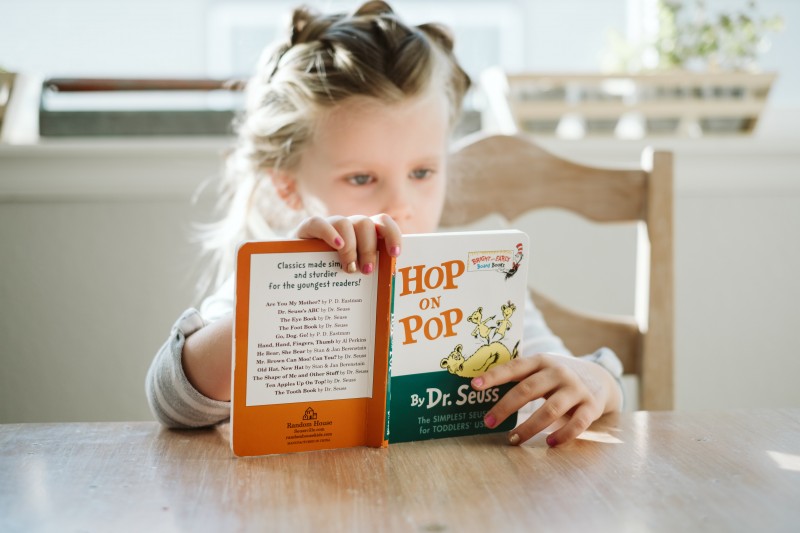
Have you ever taught a child with weak phonological awareness? The differences between sounds are poorly defined and individually sounds are swapped around. A lack of phonological discrimination could be explained by conflation. Conflation, according to the OED is the merging of two or more sets of information, texts, sets of ideas etc into one.
One of the most fascinating aspects of conflation is that it can happen at different levels of conscious awareness. So, for example teenagers learning facts about physics might conflate words such as conduction and convection. After all, these terms look similar on the page and are both types of energy transfer.
Younger children might conflate colours such as black and brown as both begin with the same phoneme and are dark colours. The rapid colour naming test in the Comprehensive Test of Phonological Processing reveals such conflation. For instance, a child I assessed once as part of a reading intervention conflated brown and green. Any brown or green square in the assessment was named ‘grouwn’ (it rhymed with brown). She had conflated the consonant blends of ‘br’ and ‘gr’ and invented a name for both colours.
In the early stages of reading, conflation can underpin confusion between consonant digraphs such as ‘ch’ and ‘sh’. Another typical conflation is ‘th’, and ‘ph’ (and ‘f’). In all of these examples, the sounds are similar and they differ only on their onset - the very beginning of the sound.
A child with sensitivity to rhythm is attuned to the onsets of the smallest sounds of language. In terms of rhythmic precision, the front edge of the sound is also the point at which the rhythmic boundary occurs. Children with a well-developed sensitivity to rhythm are also attuned to phonemes and are less likely to conflate the sounds. Logically, cultivating sensitivity to rhythm would help children to detect the onsets of phonemes at the early stages of reading. Stay tuned for Part 2 and a free infographic..
Empowering children to read musical notation fluently
4 November 2022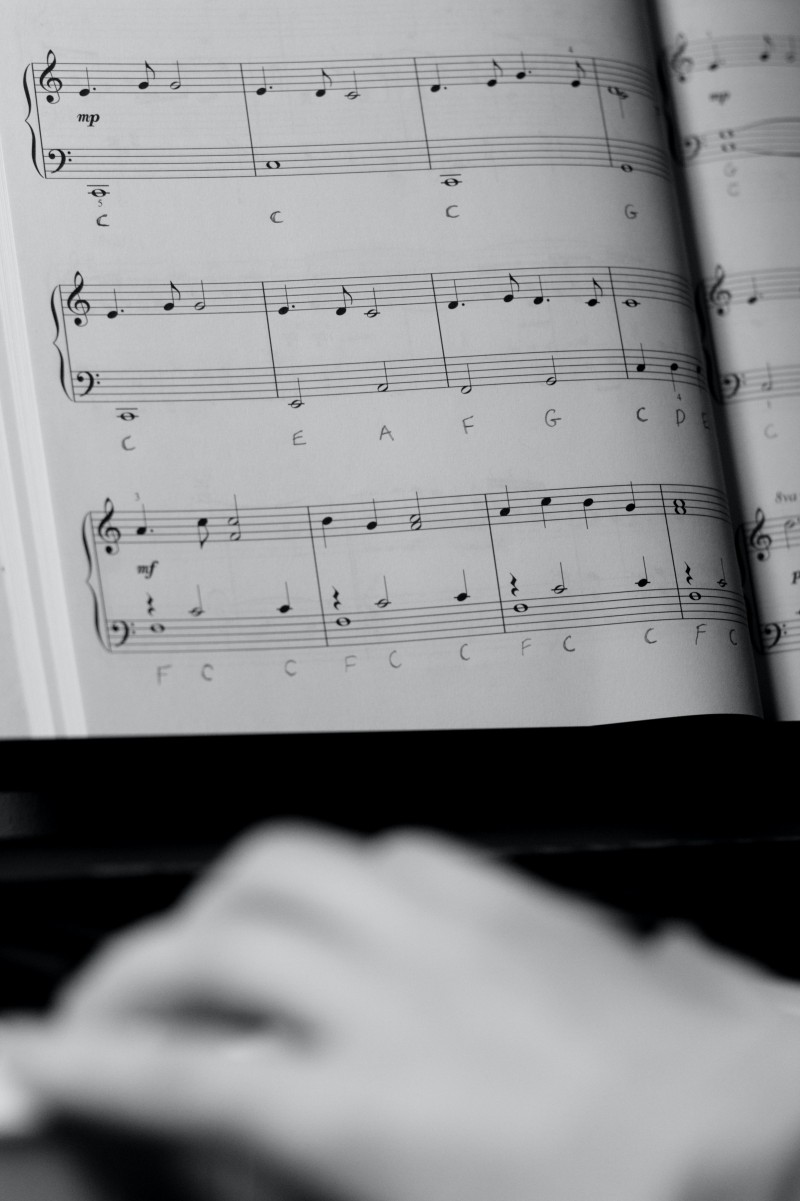
Schools face significant challenges in deciding how best to introduce musical notation into their curriculum. Resources are already stretched. Some pupils are already under strain because they struggle with reading in the core curriculum. The big question is how to integrate musical notation into curriculum planning in a way that empowers not only the children, but also the teachers.
The tried and tested ways of teaching musical notation are best suited to pupils who process information with ease. Traditionally, piano teachers begin with mnemonics for the notes that sit on the lines of the stave EGBDF (Every Good Boy Deserves Favour) GBDFA (Good Boys Deserve Fun Always) and for the notes that sit on the spaces FACE (Face) and ACEG (All Cows Eat Grass). Many teachers use these mnemonics to introduce a series of line notes and / or space notes all at once, which creates a heavy cognitive load.
What about all the children who struggle to process information, reading with ease and fluency?
Well-intentioned efforts to adapt musical notation for children who struggle to process the mnemonics, involve adding more information and increasing the cognitive load.
What is going on here?
Music teachers want children to enjoy making music and to have fun producing sounds on their instruments and they hope that in time, reading notation will gradually become familiar and easier to read. Until that point, music teachers add extra information to remind the child of the letter names of the notes. In the same vein, they often add numbers representing the finger patterns, to remind the child how to produce sounds on the instrument.
Soon enough, the page is cluttered with markings and the child has to select which ones to read.
These markings are intended as a quick fix, aiming to keep the child engaged. But of course the child relies on the letters, or the numbers, or both instead of reading the actual notes. This approach sets the child up to fail in the sense that they do not learn to read notation at all and even worse, assume that it is too difficult for them.
What could teachers do differently to support children who do not process information with ease and fluency?
A more inclusive approach would limit the cognitive load on children’s reading - which is what we do in the Rhythm for Reading Programme. Rather than teaching all the notes at once, we focus on just a few notes and develop fluency (and fun) in reading right from the start. Instead of learning the musical notes at the same time as playing musical instruments, which adds to the cognitive load, we simply use our feet, our hands and our voices, as we believe these are our most natural musical instruments.
Group learning in a structured programme supports the development of fluency, because the children are nurtured by the ethos of working together. Teamwork in combination with rhythm is an effective way to build fluency in reading, and acts as a catalyst for accelerated progress.
Teaching Musical Notation and Inclusivity
31 October 2022The teaching and learning of musical notation has become a hot new topic since its appearance in the Ofsted Inspection Framework published in July 2022.
For too long, musical notation has been associated with middle class privilege, and yet, if we look at historical photographs of colliery bands, miners would read music every week at their brass band rehearsals. Reading musical notation is deeply embedded in the industrial roots of many towns.
As a researcher I’ve met many primary school children from all backgrounds who wanted to learn to read music and I’ve also met many teachers who thought that reading music was too complicated to be taught in the classroom.This is not true at all! As teachers already know the children in their class and how to meet their learning needs, I believe that they are best placed to teach musical notation.
There are many perceived problems associated with teaching musical notation in English primary schools, and a top one is that many teachers do not read music. It is so easy to address this issue. Using the techniques of the Rhythm for Reading Programme, teachers can learn to read music fluently in time with a backing track (think Karaoke) in five minutes. Yes - five minutes!
Empowering school staff to read music offers a cost effective and strategic approach to raising standards in reading across the curriculum.
Stay tuned for the next post, when I’ll discuss ways to meet all of these challenges.
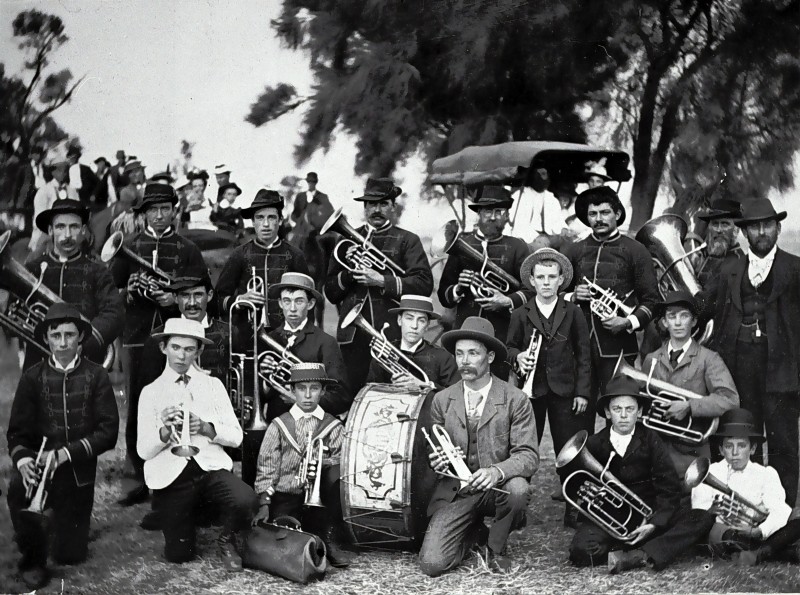
Rhythm, breath and well-being
10 October 2022
Breath is an important part of the Rhythm for Reading programme. We use our voices as a team in different ways and this engages our breath. In the early stages of the programme we use rapid fire responses to learn the names of musical notes and our breath is short, sharp and strong - just like the sounds of our voices. Even in the first session of the programme we convert our knowledge of musical notes into fluent reading of musical notation and when we do this our breath changes. Instead of individual utterances, we achieve a flowing coherent stream of note names and our breath flows across the length of the musical phrase for approximately six seconds. This time window of between five and seven seconds is a universal in human cultures. Did you know that the majority of poems are organised rhythmically into meaningful units of between five and seven seconds in duration?
A long slow exhalation is associated with calming the nervous system, even though the energy in the Rhythm for Reading session is playful and the sense of teamwork is energising. The unity between the children and teachers taking part in the programme fosters a sense of belonging which further boosts well-being alongside the calming effect of the long slow exhale.
When I first meet teachers, they often share that they feel anxious about reading musical notation, but one of the most beneficial aspects of taking part, is that our long slow exhale as a group is actually an effective way to sooth anxiety. The smiles at the end of the first musical phrase show a powerful release of emotional tension through the unity of rhythm and breath.
Rhythm, attention and rapid learning
3 October 2022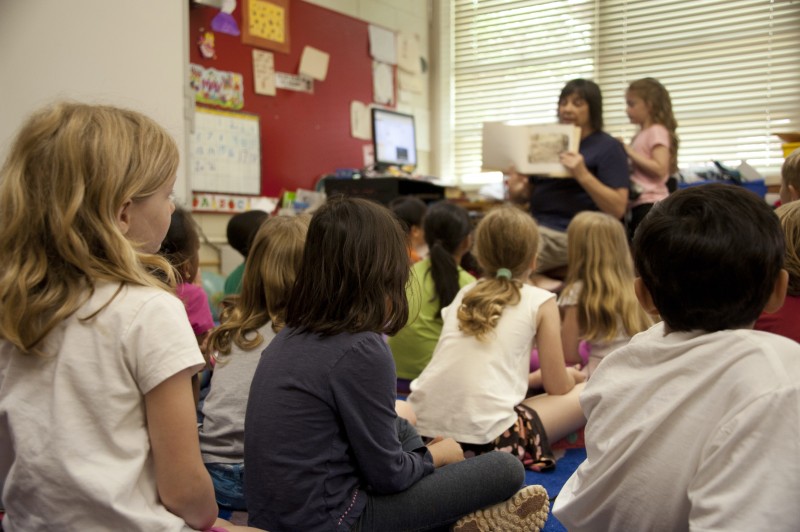
There are many different forms of attention. Neuroscientists have studied the development of cognitive attention in children as well as the different types of attention that we experience. Boredom and repetition generate a trance-like state of attention, whereas novelty and a switch in the stimulus generate a shift and a rapid reset of attention. The attention span exists to protect us, to feed us and to ensure that our genes succeed us in future generations. This is why the attention span is adaptable and can be trained to become longer or shorter using reinforcements such as rewards or threats. Ultimately, the attention span is involved in predicting when and where the next reward or threat will take place.
If a chid has experienced a threatening situation such as a war zone, they are likely to flinch in response to loud noises and their attention is likely to be highly vigilant, having been trained by the environment to monitor potential threats. A chid raised in a calm and enriched environment is likely to have fostered a natural curiosity for the world around them and to have interacted in reciprocation with it. Conversational turns in such an environment are the rhythmic hallmark of social interactions, and according to researchers contribute to emotional well-being and language development (Zimmerman et al., 2009).
The Rhythm for Reading programme offers an opportunity to move children away from a vigilant state, to a rhythmically responsive form of attention that involves reciprocation and builds receptivity and stamina. The attention system is dynamic and is particularly responsive to setting and emotional set point. If a child was threatened repeatedly at school, for example by a bully, then vigilance in the attention system would affect the child’s learning to some extent.
By the same token, it’s important that Rhythm or Reading sessions take place in the same place, on the same day of the week and at the same time of day to establish the regularity of exposure to rewarding experiences. Knowing where and when positive experiences occur, such as feelings of personal safety, social connection, a boost to well-being, engagement with rewarding patterns and calming breath work, which are nurtured during Rhythm for Reading sessions is important. The anticipation and experience of weekly Rhythm for Reading sessions enables a child’s attention system to recognise the sessions as a ‘real’ part of their environment. A consistent pattern in the children’s lives enables a deeper sense of anticipation and supports rapid learning during the programme.
Zimmerman, E.J., Gilkerson, J.,Richards, J. A., Christakis, D.A. Xu, D., Gray, S., Yapanel., U. (2009) Teaching by listening: The importance of adult-child conversations to language development. Pediatrics, 124 (1), 342-349, doi: 10.1542/peds 2008-2267
Fluent reading is not just our goal, it’s our foundation
20 September 2022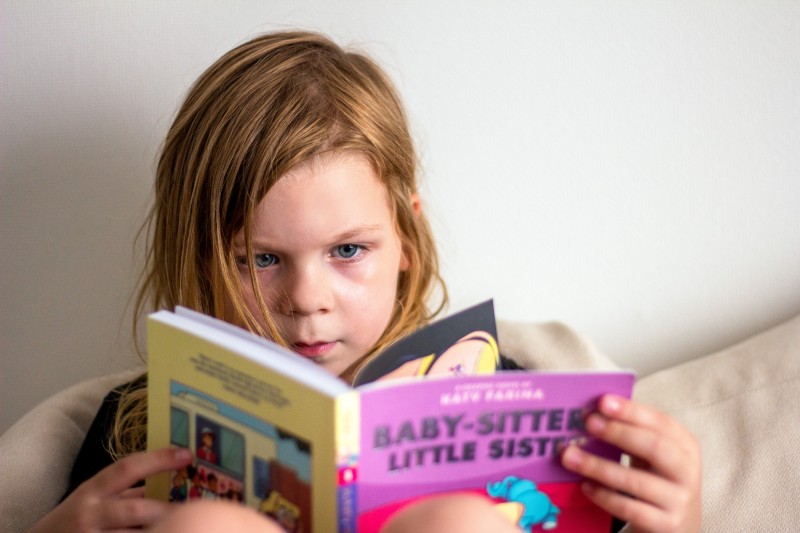
I believe that together, as educators on a mission to make a difference, we must raise standards in reading. The Rhythm for Reading programme offers a mechanism to achieve this. It provides a cumulative and structured approach that supports inclusive teaching and learning.
For instance, there is absolutely no need to break down tasks. We strive to lighten the cognitive load on working memory as an inbuilt feature, and this is why pupils experience the satisfaction of reading musical notation fluently in the very first week.
Although most curriculum subjects encourage progress in speaking or writing or problem-solving, our approach is multi-sensory: we develop children’s rhythmic sensitivity in a range of different ways.
On the one hand, the materials and resources are designed to sustain the fluency of the children’s reading, and on the other hand we adapt the level of challenge by working with the children’s ears, eyes, voices, hands and feet in ever-changing combinations.
The Programme engages working memory with sensitivity. It strengthens cognitive control across the ten weeks by gradually increasing demands on cognitive flexibility week by week. In each weekly session, the pupils build up their repertoire of routines and techniques. Ease is maintained all the while, supporting fluency and control in the execution of all the tasks. Most importantly of all, the primary goal is to support an ethos of inclusivity by maintaining the pupils’ emotional security at all times.Fluency is established at the start and it is maintained right through to the end of the ten weeks. Fluent reading is not just our goal, it’s our foundation.
Where has all the chanting gone?
2 October 2020

When I watched the announcements about lockdown on March 23rd 2020 from a hard metal seat in Glasgow International Airport, I’d already made ten trips to Scotland and it felt so frustrating that the project would be interrupted when we were so close to its completion. Throughout the lockdown and the summer months, I hoped very much that we would have a chance to salvage and finish off the work. In the past two weeks it has been an absolute privilege to return to the schools with ‘refresher sessions’ and follow-up testing. So much has changed. The teachers vigorously spray, clean and ventilate the classrooms. Everyone is vigilant and determined to keep their community safe. It is obvious that this goal is shared and held dear by all. Even young children immediately take all their books and pencils with them when they sit on the floor while their tables and chairs are disinfected. Absolutely nobody needs to be reminded to do this.
In one of the schools, particular spaces are filled with food and clothing. The leadership team came into the school every single day of the lockdown, as well as throughout the summer months to keep everyone on track; teachers worked face-to-face with the children throughout this period. Stunning new displays made by the parents now explode out from the staffroom walls and thank you cards are pinned to the noticeboard of a beautiful new community room.
Rhythm for Reading has been modified to keep everyone safe. I visit only one school in a single day and wear a mask. The children remain in their ‘bubbles’ when they take part, and stand at least two metres away from me. In between each session, I ventilate and vigorously disinfect the teaching area. Of course, there is plenty of time for cleaning as each Rhythm for Reading session is, as always, only ten minutes in duration. Actually, this level of flexibility fits in very well with the dynamic teaching that I’m seeing in the schools - and the children are loving that they are being taught in small groups and in an increasingly nuanced way.
Robust, energetic chanting has always been an important part of the Rhythm for Reading programme, but chanting, like singing is strictly prohibited. For quite some time I have been resigned to mothballing the programme for this reason. Eventually however, a neat solution popped into my mind. With a bit of experimentation, I realised that it is possible to vocalise safely and precisely, whilst keeping the volume level below that of normal speaking. All that is required to make this modification fun, is a little imagination. Most children know how to squeak like a mouse - these high pitched sounds are made in the throat and involve minimal breath - far less than speech. So, my solution has now been ‘road-tested’ by the squeaky teams in Scotland and I’m happy to have found a safe and new way to offer the programme without diluting it.
I would like to say a huge thank you to these children, teachers and school leaders for the opportunity to come back and complete the programme. It has been utterly inspiring, humbling and uplifting to visit your schools these past two weeks.
